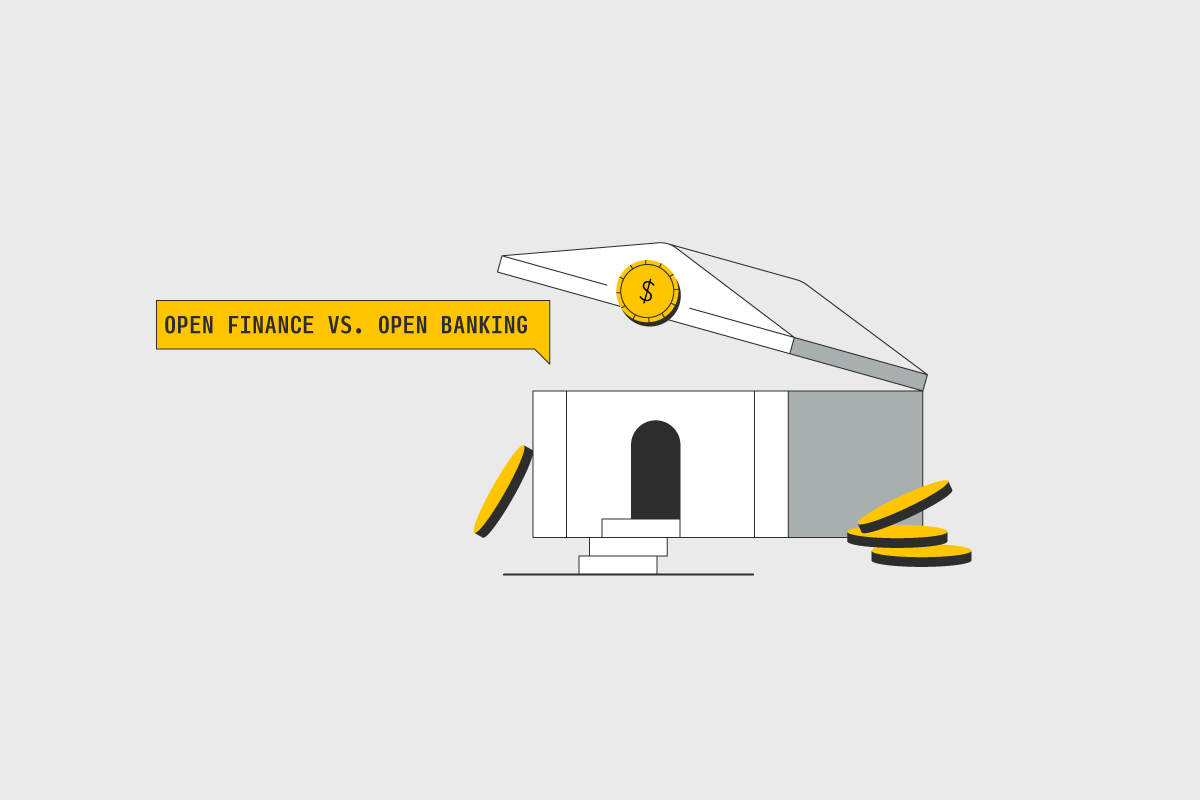Blog
Understanding open finance vs. open banking
May 9, 2023
Editorial Team

Long gone are the days when consumers were tied to a single financial institution. In fact, a Millennial or Gen Z couple may have as many as 30 or 40 financial providers between checking/savings accounts, credit cards, investing, HSAs, payment apps, and more.
While digital account opening has made it easy for consumers to find the product that works best for them — sometimes with very niche offerings — it makes managing their financial lives a bit convoluted.
Sharing data between financial institutions and third-party providers is the goal of open finance and open banking: two related, yet distinct, topics. Both break down data silos and give consumers more control over their financial information.
What is open finance?
Open finance is a broad term that refers to data sharing between a wide range of financial products and services. This could include digital wallets, loan platforms, retirement accounts, and more. By making financial data accessible across multiple financial platforms, open finance can create a more holistic view of the consumer.
Third-party providers can create solutions powered by open banking to offer new products and services. A financial management app might pull in balances from banking and investment accounts while also displaying life insurance coverage. A loan application could securely integrate credit card balances and history.
Open finance also extends to decentralized finance. Cooperation between banks, fintechs, and cryptocurrency exchanges or custodians create a complete financial picture for the consumer.
What is open banking?
Open banking is a subset of open finance that focuses specifically on sharing data related to a customer’s bank account. Account balances and transaction history are the most common data points accessed through open backing.
The data shared through open banking is consumer permissioned. That is, the consumer decides what information should be included, such as which accounts should be shared. Banking as a whole is built on trust and security, and permissioned data benefits the consumer by providing control and protecting them from unauthorized access to their banking information.
Open banking connects the legacy platforms that many banks and credit unions in the United States use with more modern product offerings. Many neobanks are powered by open banking, relying on the sleek interface of a fintech and an account opened at a traditional bank behind the scenes. Open banking also enables payment solutions for customers (including Link Money).
Technology and governance for open banking and open finance
At the Money20/20 conference in October 2022, CFPB director Rohit Chopra commented on the agency’s move to provide financial data rights under the Consumer Financial Protection Act. “While not explicitly an open banking or open finance rule, the rule will move us closer to it, by obligating financial institutions to share consumer data upon consumer request, empowering people to break up with banks that provide bad service, and unleashing more market competition,” Chopra said.
Of course, sharing sensitive financial information relies heavily on the technology that enables it, coupled with high standards of security and privacy. Currently, there’s no standardized system within the United States. Instead, companies rely on APIs to facilitate the exchange of information between financial service providers and third parties. Decentralized finance relies on blockchain technology. Artificial intelligence and machine learning enable activities like analyzing large datasets and fraud detection.
Consumers have to trust that their financial data is safe when it is shared between institutions. While the banking industry in the United States is highly regulated, the exchange of financial data lacks formal governance.
The Financial Data Exchange (FDX) fills some of this gap. A non-profit with hundreds of members and stakeholders in the financial industry, FDX sets forth principles for access, security, and consumer control.
Consumers benefit from an open financial system
A truly holistic financial ecosystem is one that empowers consumers, as Chopra noted. With seamless integrations, consumers have more options between a combination of traditional banks, fintechs, and other industry players. When powered by open finance, these institutions can offer better access to or more tailored financial services. Consumers can make better decisions about their finances or spending with all of their financial data at their fingertips.
Open finance also opens the doors for financial inclusion. The unbanked and the underbanked are often unable to build a financial profile at a traditional bank. Open banking also provides immediate access to account information and makes payments to avoid overdraft fees, which historically impact low-income individuals. Money management tools that rely on open banking and AI technology can help people better understand their budgets.
Open banking and open finance are not just about data sharing between financial institutions and third-party providers. They also represent a shift towards more collaboration and modernization: two things the U.S. financial system really needs. As the use cases for open banking and open finance continue to grow, we can expect continued innovation that meets the evolving needs of consumers.
Link Money is powered by open banking and abides by FDX standards. Learn how you can enable customers to pay securely from their bank accounts here.